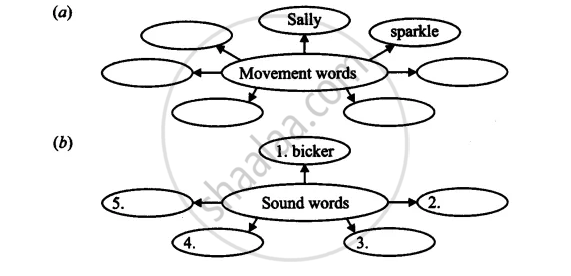Advertisements
Advertisements
प्रश्न
The village consisted of less than thirty houses, only one of them built with brick and cement. Painted a brilliant yellow and blue all over with gorgeous carvings of gods and gargoyles on its balustrade, it was known as the Big House. The other houses, distributed in four streets, were generally of bamboo thatch, straw, mud, and other unspecified material. Muni’s was the last house in the fourth street, beyond which stretched the fields. In his prosperous days Muni had owned a flock of forty sheep and goats and sallied forth every morning driving the flock to the highway a couple of miles away.
Read the extract given below and answer the question that follow.
What did Muni feed his flock with? When did he come back home? What did he carry home?
उत्तर
Muni fed his flock with foliage. He cam back home at sunset. He gathered faggots and dry sticks and carried them home for fuel.
APPEARS IN
संबंधित प्रश्न
Study the words in italics in the sentences below. They are formed by prefixing un – or in – to their antonyms (words opposite in meaning).
• I was a short boy with rather undistinguished looks. (un + distinguished)
• My austere father used to avoid all inessential comforts.(in + essential)
• The area was completely unaffected by the war.(un + affected)
• He should not spread the poison of social inequality and communal intolerance. (in + equality, in+ tolerance)
Now form the opposites of the words below by prefixing un- or in-. The prefix in- can also have the forms il-, ir-, or im- (for example: illiterate –il + literate, impractical –im + practical, irrational – ir+ rational). You may consult a dictionary if you wish.
| _____adequate | _____acceptable | _____regular | _____tolerant |
| ____demanding | ____active | _____true | _____permanent |
| ____patriotic | ____disputed | ____accessible | _____coherent |
| _____logical | _____legal | _____responsible | _____possible |
After reading the poem answer the following questions.
The poet has used a number of words which indicate 'movement' and 'sound'. Working
with your partner make a list of these words from the poem and complete the web chart.

(c.) A word or a combination of words, whose sound seems to resemble the sound it
denotes (for example: "hiss", "buzz", "etc.) is called onomatopoeia. From the words that
you have filled in the blurbs above point out these words.
What new policy did Napoleon make? The new • policy brought a vague uneasiness among the animals. What did they recall?
How did the kind old couple treat their dog?
Why do we make swings on trees?
What was the connection between the motor and the fan’s Chatter?
Who says this to whom and why?
“What have you to say in your defence?”
Identify the ‘he’ in the first line.
What does the speaker usually do while lying in the bed?
Referring closely to the poem, Birches, discuss what differentiates the swinging of birches in the poet's adulthood from that in his childhood.
